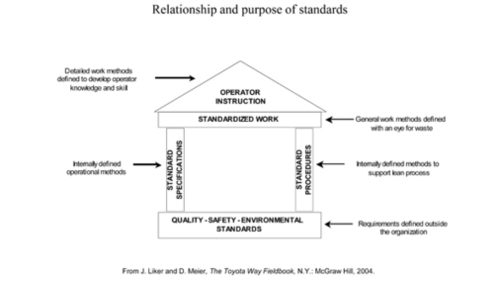Dec 28 2013
Manufacturing is Making Things — Service isn’t
With services being the dominant source of employment in advanced economies, more and more consultants are turning to this area as the next frontier for Lean, and engaging in debates as to which of Manufacturing or Service has the greatest variability. The level of variability, however, does not strike me as the fundamental difference between the two.
It is more obvious: Manufacturing is about making things, while Service is not. In manufacturing, a physical object is the output. In service, if there is a physical output, it is only an information support, a licence, a boarding pass, a stamped form, a prescription, or a report.
High volume/Low mix and Low volume/High mix activities exist on both sides. In manufacturing, you have plants making 1 million identical electricity meters per year while others make 200 custom-designed machines and fixtures. In service, you have organizations that issue drivers’ licences all day, every day, and others that provide advice on interior design that is custom for each home and occupant.
Manufacturing needs the appropriate technology and management to make things, including expensive facilities, often with large, noisy, dirty, and even dangerous machines, and a support structure for logistics, maintenance, quality, etc. It attracts some people and not others, and the experience of working together in production creates a level of camaraderie that is rarely found in service… I could go on and on.
The consequence is that improving Service is a different challenge from improving Manufacturing. I never bought the notion that a system like TPS, developed to make cars, could be a panacea for all business activities, and this is why I remained focused on Manufacturing.
Whether Lean is an expanded or watered down version of TPS, I consider that it has to prove itself in every new domain, even in Manufacturing. In Service, it seems to help in hospital operations, and the crossover value of industrial engineering in this field has been established since Frank Gilbreth redesigned operating room procedures 100 years ago.
Would it help in the organization of distribution centers for eCommerce? Perhaps, but it is not a foregone conclusion. Does Amazon use Lean? The closest I could find to a positive answer is one sentence by Jeff Bezos in an Harvard Business Review interview quoted by Pete Abilla on Shmula:
“I literally learned a bunch of techniques, like Six Sigma and lean manufacturing and other incredibly useful approaches.”

Unlike other Shmula readers, I can’t jump from this to the conclusion that Amazon are based on Six Sigma or Lean. Instead, what I hear Bezos saying is “We studied what’s out there, and went our own way.” And that way is a game changer in retail worldwide, worthy of study in its own right.






Jan 1 2014
Internal Threat to TPS due to new Hiring Practices | Christoph Roser
See on Scoop.it – lean manufacturing
“Toyota with its Toyota Production System is the archetype of lean manufacturing, which also makes it to one of the most successful companies on earth. This success is due to outstanding management at Toyota; however, recent changes in hiring practices threaten the Toyota Production System at its core.”
Now a professor at Karlsruhe University, Christoph Roser is an alumnus of Toyota Research in Japan, so he has first-hand knowledge of the topic.
Toyota’s response to the Aisin Seiki fire of 1997 is certainly a shining example of its supply chain management practices at work, but its relevance to employee hiring practices is not clear to me.
Also, one should not confuse dominating a meeting with getting decisions to go your way, and learning to say “No” rather than “It would be a little difficult” is just being culturally sensitive.
Having this ability carries no implication on a person’s character. Being articulate and assertive does not mean being selfish. Being selfish means only looking after yourself. Making sure that what you mean comes across clearly to the other side in a negotiation is perfectly compatible with seeking win-win solutions.
See on www.allaboutlean.com
Share this:
Like this:
By Michel Baudin • Management 1 • Tags: Hiring, HR, Toyota, TPS